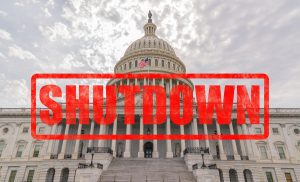Preparing your pension & OPEB journal entries doesn’t have to be a scramble. With the right documentation, a strong process, and a clear understanding of key timelines, you can take the stress out of year-end and set yourself up for a smoother audit.
Whether you’re navigating CalPERS, OCERS, SBCERA, or an OPEB trust, this guide will help you determine what needs to be reported, when, and how.
Step 1: Identify What Plans to Report
Before you dive into journal entries and audit prep, take time to review which pension and OPEB plans require reporting. This includes:
- Listing all retirement and OPEB plans your agency participates in
- Determining the plan type: cost-sharing or agent-multiple employer
- Verifying the reporting and measurement periods for each
- Gathering prior-year calculations and allocation data
This foundational step ensures accuracy when calculating deferred inflows/outflows and net liabilities—and helps prevent last-minute surprises.
Step 2: Understand the Reporting vs. Measurement Period
A common pitfall in pension/OPEB reporting is confusing the valuation, measurement, and reporting dates. Here’s what you need to know:
- Valuation Date: The date of the census data used by the actuary—often two years behind the fiscal year.
- Measurement Date: The date the Total Pension Liability and Net Pension Liability are determined—typically one year behind the fiscal year.
- Reporting Period: Your agency’s fiscal year end—commonly June 30.
For example, if your fiscal year ends June 30, 2025, the measurement period can be no earlier than July 1, 2023 – June 30, 2024.
Step 3: Know What Reports You Need
Here’s your audit prep checklist. Start collecting these early:
- Actuarial Report for the Fiscal Year
- Fiduciary Net Position Report
- Audited Financial Statements of the Plan
- Journal Entries for GASB 68 & 75, with supporting schedules for subsequent contributions
- Census Data as of the Valuation Date
- Contribution reports
You’ll also need plan-specific documents depending on the system you participate in:
System-Specific Needs
- CalPERS: Schedule of employer allocations, calculation templates for cost-sharing plans
- OCERS/SBCERA: Direct plan reporting materials
- OPEB: Separate actuarial report
For June 30 year-end filers, it’s critical to obtain these reports as early as possible to avoid delays in your 2024-25 audit timeline.
Step 4: Accounting by Plan Type
Not all plans follow the same rules. Here’s how to prepare for each:
Agent-Multiple Employer Pension Plans
Each employer reports their portion of the plan individually. To prepare entries, you’ll need:
- Prior-year ending balances and allocations
- Contributions made after the measurement date (but within the fiscal year)
- Allocation across funds and functional expenses
The actuarial report will often provide the calculated ending balances, deferred inflows, and outflows.
Cost-Sharing Pension Plans
Common with CalPERS, these require calculating your proportionate share of total liabilities. You’ll need:
- Last year’s calculation file
- Updated proportionate share template from CalPERS
- Contribution and allocation details
Use the template to calculate balances, then book the journal entries.
OPEB Plans
Since these are actuarially calculated specifically for your agency, you’ll likely receive a complete set of figures. To prepare:
- Confirm the actuarial report includes all current contributions
- If not, add contributions made after the measurement date
- Allocate expenses across funds/functions
Once the entries are prepared, incorporate them into your GL and begin internal review ahead of the audit.
Step 5: Avoid Common Mistakes
Audit issues often arise from a few avoidable errors:
- Mismatch Between Actuarial Report and Journal Entries
Make sure your journal entries agree with the actuarial report totals. - Incorrect Fund Allocations
Use a consistent and logical method to allocate costs across programs and funds. - Footnotes Are Outdated
Ensure footnote disclosures reflect the most recent plan info—actuarial assumptions, contribution rates, etc. - Confusion Around Key Dates
Keep valuation, measurement, and reporting dates straight—they are not interchangeable. - Short-term OPEB portion
- Ensure when OPEB plans do not have trust that a short-term portion is recorded on your financial statements.
Step 6: Pro Tips to Stay Ahead
- Get MyCalPERS Business Partner Access – This makes it easier to access key reports for your CalPERS plans.
- Hire a Consultant – For complex plans or staffing shortages, a consultant can ensure accuracy and timeliness.
- Use a Journal Entry Template – Standardized templates reduce errors and make the process repeatable.
- Write an SOP – Document your procedures so future reporting stays consistent, even with staff changes.
Final Thoughts
Pension and OPEB reporting may be complex—but it doesn’t have to be overwhelming. The key is preparation. When your documentation is complete, your timelines are clearly mapped out, and your workflow is organized, the process becomes manageable—and even predictable.
Starting early is more than just good advice—it’s essential. It gives you time to reconcile data, clarify allocation methods, and address any discrepancies before audit deadlines loom. Leverage checklists, templates, and automation tools where possible to reduce manual errors and save time.
And remember, you don’t have to go it alone. Whether you need help understanding actuarial reports, compiling census data, or preparing journal entries, reaching out to your audit team or a trusted advisor can keep things on track.
Want a deeper dive into this topic?
We’re hosting an upcoming webinar on Pension & OPEB, specifically designed for local government finance teams. We’ll walk through real examples, answer your questions live, and share tips to make your process smoother month after month.
Watch the recording of our webinar: https://lslcpas.com/webinar/back-to-basics-pension-opeb/




